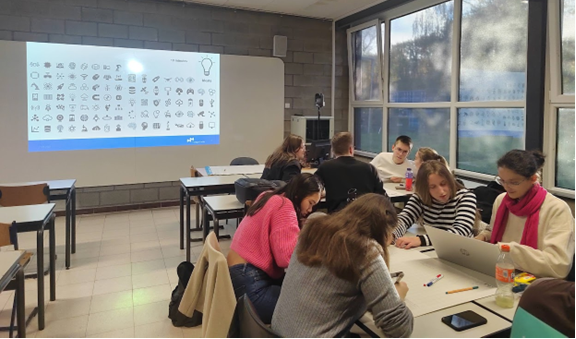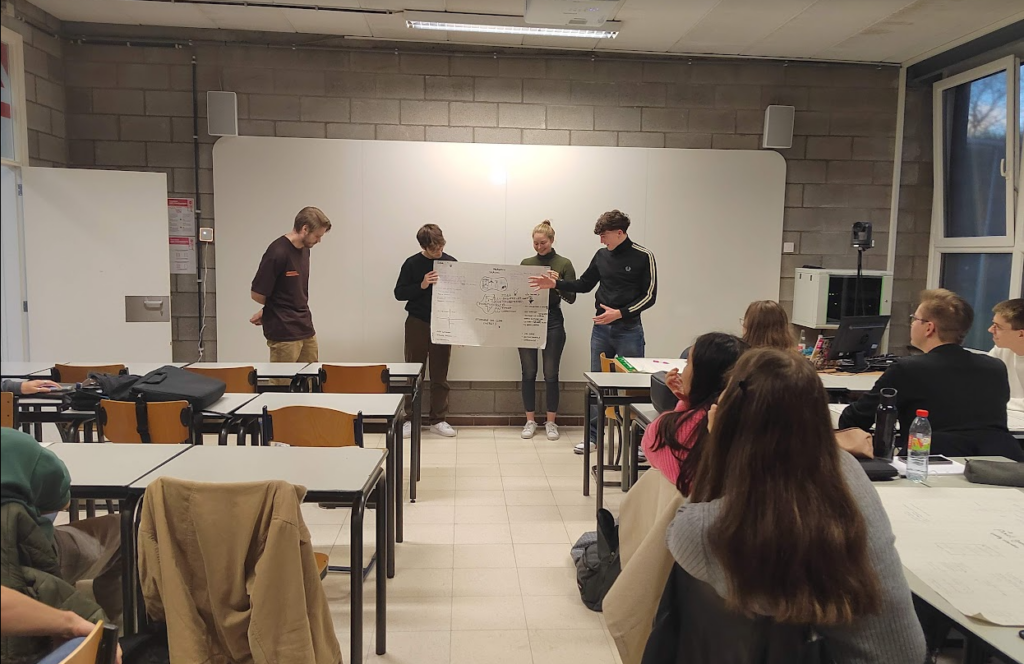The VIVES University of Applied Sciences in Kortrijk, Belgium hosted their traditional International Staff week in November 2023. I was one of its 40 participants from more than twenty countries all over the world including India, Cuba, Indonesia and Peru. The host faculty at VIVES combines commercial sciences, business management and informatics. The students are slightly younger than their Finnish equivalents, most being around 17-18 years old.
To take part in the International Staff week, all visiting lecturers were asked to prepare a three-hour workshop for students in their chosen subject. The students got to read a small synopsis of the workshop and sign up to the ones that interested them most. My workshop: A Gamification Design Dash was successful enough to be offered twice, for 45 students altogether.
Introducing design thinking
My chosen method was Design Dash, a rapid design process developed by Molly Clare Wilson and her students at the HPI School of Design Thinking in Germany. It is offered under Creative Commons licencing free to use for any educational purposes. I use it widely in my service design trainings as the first introduction to design thinking. It is fast, fun and simple to use.
To make it suitable for my workshop at VIVES, I made some adjustments to the method. The student groups selected their design topics from the Unite Nation’s 17 Sustainable Development Goals, as I wanted the student to make an impact to the world. My promise at the beginning of the workshop was that we would use the next three hours for than saving the world!
Innovative solutions
As in any service design process, the students in my workshops collected information about the potential users, defined the design challenge, chose the best ideas, prototyped them and gathered feedback. Finally, they presented their work to the other students. The fun workshop improved teamwork, innovation and problem-solving skills, while it also taught gamification and how to use service design to solve wicked real-world problems.

Picture 1: Students discussing various technologies to solve wicked problems (Mäkeläinen J.)
Altogether ten groups of 4-5 students participated in the Design Dash. Each team came up with highly usable solutions to many important problems facing the world today. Below are some of the innovations we had, just to mention a few.
- smart garbage bins that rewarded their users
- an app to help students with their life balance and motivation
- a mindfulness game with virtual pets
- a digital currency to help limit overspending
- a PokemonGO type game for organizing cleaning parties in city parks
- a VR activity game to produce affordable and clean energy

Picture 2: Groups presenting their Design Dash ideas to the class (Mäkeläinen J.)
Eye opening work in different surroundings
When speaking with the students after the class, I realised that most of them were not very familiar with workshops or design thinking methods. The main pedagogical approach they were familiar with seemed to be lectures and small class room tasks, but not really self-directed group work. Therefore, it was a good idea to break down the workshop in quick 10-minute tasks so that the students always knew what they were supposed to be doing next and there was no time for any distracting activities.
When coached properly, students of any age or culture can innovate just about anything. Breaking difficult problems into bite size tasks works perfectly, especially with younger students. Even if the general attention span of students is in decline, their innovativeness is not. Gamification is one way to make it shine.
Editing: Marianne Wegmüller
Picture: Haaga-Helia